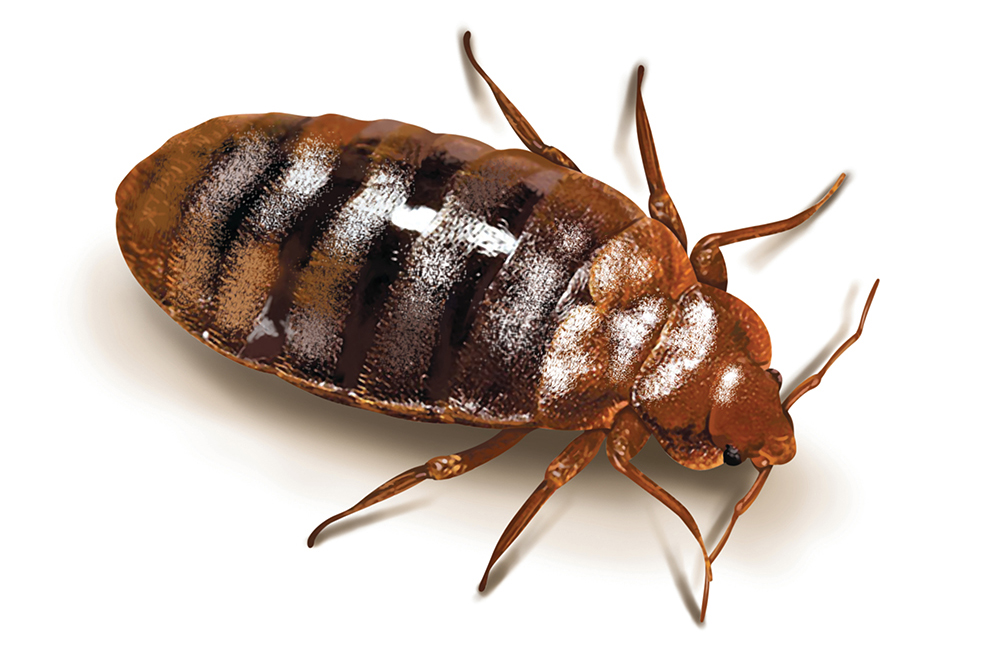Top-Rated Bed Bug Exterminator: DC Exterminator for Effective Treatment
Wiki Article
Discovering the Science Behind Bed Insect Heat Treatments as a Lasting Pest Monitoring Approach
In the world of insect management, the mission for sustainable and efficient solutions continues to be a consistent pursuit. One such approach that has gained traction in current years is using warmth therapies to battle bed bug invasions. By using the science behind thermal death points for these persistent insects, warmth treatments provide an encouraging alternative to traditional chemical-based strategies. The intricacies of just how warmth efficiently gets rid of bed pests and the more comprehensive ramifications for sustainable parasite administration methods make this a subject worth discovering even more.Bed Bug Heat Therapy Process

Thermal Fatality Point for Bed Insects
Exposing bed insects to elevated temperature levels past their thermal resistance range is critical for accomplishing reliable removal in warmth treatment procedures. The thermal fatality point for bed pests describes the temperature at which these parasites can not endure. Research study shows that bed bugs begin to die when subjected to temperatures above 113 ° F(45 ° C) for a continual duration. As the temperature boosts, so does the mortality rate of bed pests. At around 118 ° F(48 ° C ), bed bugs start to pass away swiftly, with a death price of nearly 99% within mins of exposure. This demonstrates the level of sensitivity of bed bugs to high temperatures and highlights the performance of heat treatments in removing infestations. By reaching and preserving temperature levels over the thermal death point for bed insects, bug monitoring professionals can make sure thorough removal of bed bug populations, including hard-to-reach areas where chemical treatments may be much less reliable. Understanding the thermal death point for bed bugs is necessary for applying effective heat treatment strategies and achieving sustainable insect administration results.Benefits of Heat Treatments
Having established the critical thermal death factor for bed pests, it is imperative to currently discover the significant advantages that warmth therapies provide in successfully eliminating these resistant pests. One of the main benefits is that warmth can penetrate deep into fractures and holes where bed insects conceal, making sure that even the most hard-to-reach locations are warmed to lethal temperatures.In addition, warmth treatments are non-toxic and eco-friendly, making them a lasting insect monitoring method. Unlike chemical pesticides, warm therapies do not leave damaging deposits that can posture dangers to human wellness or the setting. This facet is especially vital in delicate atmospheres such as healthcare facilities, institutions, and houses where chemical usage may not be desirable.
In addition, warmth therapies have a high success price in removing bed pest invasions in a single therapy, reducing the requirement for multiple visits and minimizing disturbance to residents. This performance not only conserves money and time but likewise gives assurance to those dealing with bed pest issues.
Efficiency of Heat Therapy

Research study researches have actually regularly shown the performance of warm treatments in achieving a high price of bed pest death. Appropriately carried out warm treatments can reach all the cracks and holes where bed pests might be harboring, ensuring a detailed method to elimination. Moreover, heat therapies have the added advantage of killing bed insect eggs, which are often resistant to standard chemical treatments. Overall, the effectiveness of warmth treatments in eradicating bed bug infestations makes them a dependable and lasting bug monitoring approach.
Sustainable Bug Administration Conveniences
Applying lasting insect management practices offers long-lasting advantages for both the environment and public health and wellness. By utilizing approaches such as warm therapies for pest control, we can minimize the reliance on damaging chemical pesticides that can have adverse effects on environments and human wellness - bed bug treatment. Lasting bug management approaches assist in protecting biodiversity by targeting particular insects without damaging non-target organisms, thereby keeping a balanced ecological community
Moreover, lasting bug monitoring methods add to the general health and wellness of the general public. By reducing exposure to toxic chemicals made use of in traditional bug control methods, warm therapies offer a more secure alternative for bug management in household, commercial, and public areas. This decrease in visit the site chemical use also assists in preventing pesticide deposits from polluting water, air, and soil, protecting ecological quality.
Final Thought
To conclude, bed pest warmth treatments have actually been revealed to be a lasting and effective bug management approach. The thermal fatality factor for bed bugs makes them vulnerable to warm therapies, which have countless benefits over traditional chemical treatments. The effectiveness of warm treatments in getting rid of bed pest problems while minimizing environmental effect highlights the possibility of this approach as a sustainable service for insect control.The bed insect warm treatment process includes elevating the temperature within plagued areas to a level that successfully gets rid of bed insects and their eggs. By reaching and preserving temperatures visit homepage above the thermal death factor for bed pests, parasite monitoring specialists can make certain thorough removal of bed insect populations, including hard-to-reach locations where chemical therapies might be less reliable. One of the key benefits is that warm can permeate deep into gaps and fractures where bed bugs conceal, ensuring that also the most hard-to-reach locations are heated up to lethal temperatures. Unlike chemical treatments that may leave behind resistant populaces, heat treatments use a environmentally pleasant and non-toxic service that can permeate deep into furnishings, walls, and various other hard-to-reach locations where bed insects hide.
The thermal fatality point for bed bugs makes them vulnerable to warm treatments, which have many benefits over standard chemical therapies.
Report this wiki page